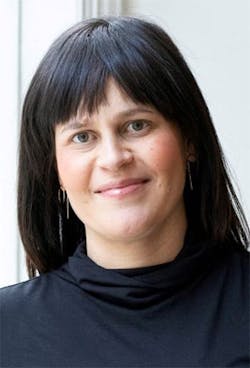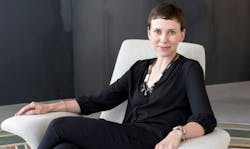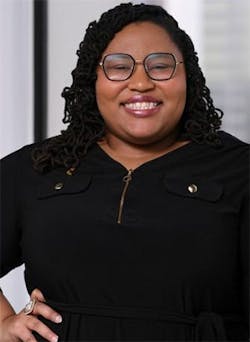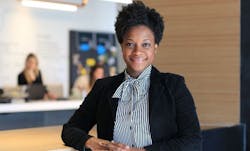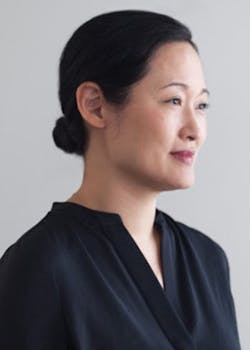Leading Women in Design Discuss Changing Roles, Mentors and the Urgency of This Moment
In this ongoing series, IIDA highlights women who are leading the design industry through a time of change, innovation and progress.
Since March, IIDA has been sitting down (virtually) with women in the design industry who are reshaping our world and impacting change. During a time when our communities are faced with great challenges—an ongoing pandemic, shifting economies and racial injustice—the significance of design and the need for strong leaders is paramount.
The work of these women endows us with much-needed clarity, beauty, accessibility and problem-solving, and they are all making design happen for a better tomorrow.
IIDA checks in with this inspirational group to see what they have to say on mentoring within the industry, the urgency of this current moment, where they find inspiration and how defining the vital roles of women in design is more important now than ever.
Linda C. Mysliwiec, AIA, senior associate, studio director, Gensler, Chicago
I’ve had so many incredible mentors over the years, and each of them was the thing I needed in my career at that particular time. Earlier on, I had mentors who encouraged me to answer my own questions and find solutions to challenges that came up; that helped me build confidence in my skills, knowledge and design point of view.
And today, now that I’m more experienced, the best mentors challenge my way of thinking, opening my mind to a broader range of possibilities.
Mentorship is a major part of my day-to-day, and I find it incredibly rewarding. Being open, being someone who speaks my mind and bringing humanity to work every day—those are the things that allow people to feel they can approach you.
Rather than simply telling someone what they should do, I try to advise on a few different scenarios or options and let them decide what to do next. The way they take that advice and make it work for their own particular situation, personality and set of opinions is what makes the relationship so rewarding.
I don’t desire to go at it alone; in architecture and design, we’re better together, and it makes the journey so enjoyable when you have a team around you to support and be supported by.
Kia Weatherspoon, principal and interior design advocate, Determined by Design
As a woman of color, I never saw designers who looked like me in leadership roles early on in my career. I had to learn to be my own hero. While the landscape lacked diversity, it did teach me that no one is going to advocate better for me than me. Once you can advocate for yourself, then you can advocate for others.
Due to my early experiences in the industry, I decided to become the leader I wanted to see. I adamantly make myself available to support any emerging designer or student through the various stages of their careers. Currently, I am actively mentoring and sponsoring 10 emerging designers. Whether working with individuals or speaking to audiences, I am committed to sharing all the “secrets” no one told or offered me.
When speaking at Virginia Commonwealth University in January 2020, a student of color said to me, “You are the first interior designer of color I’ve ever met. When I saw you and heard your story, I could see myself in you. I needed that because I was tired of being the only one!” This student was considering dropping out of the program. It is because of stories like this that I have returned to teaching. It is a call to action.
Meghan Webster, AIA, principal, Gensler, Chicago
My passion is people, and learning about how they perceive and operate in the world, and this has framed how I’ve learned from mentors. I am drawn to people who I most emulate and deeply respect, and I learn from those qualities that define them. This approach ties philosophically to Gensler and our “constellation” of talent, so in a way, I think of our firm as a place full of a constellation of mentors.
I owe my career to so many mentors, and probably the most important thing I’ve learned from them is to pay it forward. My hope is that the impact of my mentorship on others’ careers enables a similar level of growth that I experienced. I think the most rewarding aspect of mentoring others is watching where they head in their own careers and learning from the new lens and perspective they bring to my own growth.
It’s a completely reciprocal process that can’t be manufactured or superficial.
Tara Headley, Assoc. IIDA, intermediate designer, Hendrick, Atlanta
I am inspired by women of color in leadership positions. They are the ones that have blazed a trail to success and set the example for design professionals like myself to follow.
Knowing the obstacles they have had to overcome to make it to a position of power inspires me to fight to achieve that as well. Seeing them makes me believe in myself even more.
[Related: Where Are Design’s Women Leaders?]
Ronnie Belizaire, IIDA, corporate real estate manager, Americas, Daimler
I am inspired by the lives of everyday people from all walks of life who make the world we live in more interesting and meaningful. Before COVID-19 began, I was an avid traveler both personally and professionally. I was adamant about visiting and seeing parts of the world that gave me a different perspective on what it means to live a life.
While I enjoyed the finer things all these places had to offer, I was also intentional about always including stops where everyday people of a place live and work so I could truly have an immersive experience that I knew would leave a lasting imprint on me. My interactions with everyday people in any place I visit are usually some of my favorite moments of any trip. One of my personal mottos is, “See the world, and bring it back home with you through the memories made.”
Angie Lee, IIDA, AIA, partner and design director of interiors, FXCollaborative, New York
I find that because of the new and old guard of fabulous female game changers, I am embracing a kind of critical thinking that focuses on accountability and activism.
On top of that, I am awe-inspired by the movements that have swept the country and the planet in many cases.
The ferocious courage of very young climate activists, the tenacity and preparedness of junior congress members, and the constant, quiet expansion of dialogue and diversity of organizations like IIDA that create new pathways toward an interconnected world of good design remind me that we will be okay again.
The Changing Role of Women in Design
Ronnie Belizaire
It is simply good business to ensure that women are celebrated and elevated into leadership roles within the design industry. I remember being in design school over 15 years ago, and the only woman I studied as a design savant was Florence Knoll in my textbooks and course curriculum.
While Florence was brilliant, I’m pretty certain she wasn’t the only woman who did design work worthy to be celebrated. Women bring a certain ability to translate the needs of all into their designs while leading with empathy, and the design industry could benefit from that type of energy.
Gina Berndt, FIIDA, ASID, principal and managing director, Perkins and Will, Chicago
Women often lead with honesty, patience, empathy and compassion. These are always valuable attributes, but this crisis demands that we all lead with these gifts.
Women have an innate quality to see minutia and at the same time understand big strategies or moves that need to be made.
We know how to pull the problem apart and look at all the components of the problem in order to have a thoughtful approach to moving forward.
Looking at all the parts, we can celebrate the good within the problem, which is very important right now.
We then also have a clearer picture of the core issues that need to be solved. We can then define a strategy and team to accomplish the right results. I am always so amazed by how women think. We are blessed!
Rachel Rouse, IIDA, principal, director of interiors, HOK
We can be the change we wish to see in the world. I hope to see a more equitable society for my children. Our industry can be tough, particularly on parents and women of color.
It’s the role of all women to lift each other up and do everything in our power to help each other grow and thrive.
Kia Weatherspoon
Women can better position themselves by acknowledging that our innate level of empathy and understanding make us an asset to a team and/or deal. We can position ourselves for greater success by using empathy as a value add.
We put others first, which is a strength. This allows us to take into consideration the whole person or team experience as it relates to the end-user as well as for relationship and team building. I think we need to use our empathetic lens to create more intentional, inclusive design outcomes and teams.
About the Author:
Irena Frumkin is a copywriter and editor for IIDA. She holds degrees in art history from the School of the Art Institute of Chicago and Temple University.
Read next:

